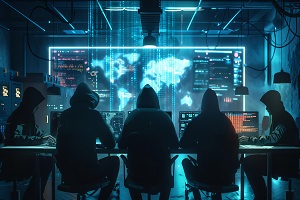
Burglarizing homes and robbing stores are crimes we have all seen on TV, in the movies, or perhaps in your town. Today, major crimes are committed by cyber criminals who steal data, and company processes, and disrupt computer systems. We now use crime fighters called digital forensics to solve these mysteries.
Whether in the U.S., Europe, or Asia, cybercrime is on the rise and organizations lose billions of dollars each year. Investigators use digital forensics to lessen or deter hackers from doing their work. Businesses also have other related special needs and problems that must be researched. Contact ITI Technical College today for more information.
What Is Digital Forensics
Digital forensics is a process to uncover and interpret electronic data related to cybercrime. It is a branch of forensic science for investigating any device that can store digital data. It serves several purposes for police work, including:
- Identifying digital evidence
- Preserving digital evidence
- Analyzing digital evidence
- Validating digital evidence
- Documenting digital evidence
- Presenting evidence in a court of law
Digital forensics is vital for preserving any evidence in its most original form while conducting a formal investigation. It is useful for reconstructing past events related to cybercrime. This process is also used for other applications such as business settings.
Currently, digital forensic tools include digital forensic open-source tools, digital forensics hardware tools, and other specialized tools. Students learn how to work with digital forensics in information technology and cybersecurity training in college courses.
Steps To Follow In Digital Forensics Investigations
Digital forensics evidence is gathered and recorded by professionals as proof of cybercrime to present in a court of law. The investigation ensues so cybercriminals cannot tamper with the evidence. These steps must be followed:
- Identification – In this first step, a researcher must find the evidence of a crime and note where it is stored.
- Collection – Digital evidence is collected from its source by seizing the electronic product, or by remotely accessing the data where it is stored. Evidence integrity must be maintained while collecting all facts and proof.
- Preservation – Next, the data must be isolated, secured, and preserved in the best form possible for courtroom use.
- Analysis – Using the found evidence as a basis, you must reconstruct data and draw positive and accurate conclusions.
- Documentation – A record of all the found data must be made to recreate the crime scene and any relevant circumstances.
- Presentation – The final report must be court-admissible and correctly reported to support legal arguments and judicial inquiry.
Anyone conducting the investigation must be methodical and good at observing and noting all relevant details.
| “Whether in the U.S., Europe, or Asia, cybercrime is on the rise and organizations lose billions of dollars each year.” |
Digital Forensics Is Used In Business Settings
Any organization can use digital forensics as an important tool to investigate issues they may encounter. In addition to data breaches and cybercrime, it is used for:
- Compliance – Digital forensics is used to aid companies in complying with policies and regulations such as data privacy and security. Companies use it for conducting audits of data, and computer systems, and training employees on security practices.
- Employee Misconduct – Employees may break company rules or laws such as fraud, harassment, or theft. Forensics can discover evidence to take disciplinary action against workers or fire them.
- Intellectual Property Theft – Occasionally, someone steals intellectual property such as unauthorized copying of material or distribution of trade secrets or processes. The evidence can be used to take legal action against the offenders.
Organizations can conduct digital forensic investigations with their employees or hire a company to create customized services to meet their specific needs.
Careers And Tools Used In Digital Forensic Investigations
The need for digital forensic investigators is growing nationwide and more specialty areas are emerging. You can prepare for these jobs and careers with the appropriate training:
- Computer Forensics Investigator
- Computer Forensics Technician
- Forensic Computer Analyst
- Information Security Analyst
- Information Systems Security Analyst
- Security Consultant
These professionals use digital devices that are crucial to solving cybercrimes. Evidence is commonly found on a laptop or phone whether owned by a suspect or victim. The data found in these systems can contain enough evidence to put together a case. Common investigative tools currently in use include:
| Autopsy | Bulk Extractor | COFFEE | CAINE | Digital Forensics Framework |
| DumpZilla | EndCase | EquipTool | FTK Imager | MAGNET RAM Capture |
| Nagios | Redline | SIFT Workstation | SNORT | |
| Tor | Volatility | WireShark |
Retrieving data in cybercrimes efficiently, securely, and lawfully is difficult without the right tools. Investigators rely on digital forensics tools such as those above to help them solve crimes. Learn more about a career in this field by requesting information from ITI Technical College or visiting our Information Technology (AOS) Associate In Occupational Studies Degree page.
For more information about graduation rates, the median debt of students who completed the program, and other important information, please visit our website:https://iticollege.edu/disclosures/






